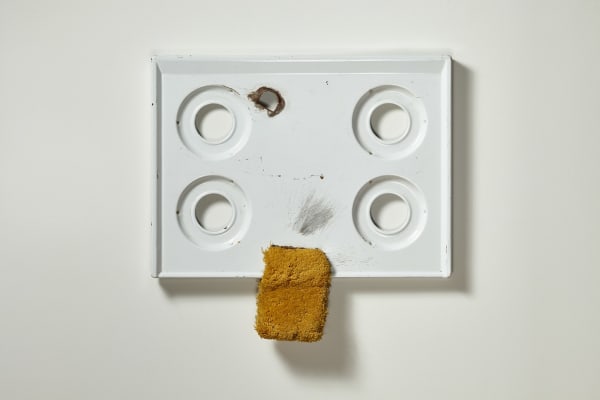Hawkins Bolden American, 1914-2005
At around age seven Hawkins Bolden became blind from an accidental blow to the head in a baseball game. Frail and epileptic, Bolden received no formal education. As he developed a heightened sense of touch that awakened his creativity, he started making from found materials all kinds of objects: kites, leg stilts, toys, homemade radios, and the inventive scarecrow sculptures for which he later became well known. Bolden and his identical twin, Monroe, were born in Bailey’s Bottom (Memphis, Tennessee) to parents of Creole and African American descent who cared for Bolden until they died and his sister, Elizabeth, took over his care. Bolden lived most of his life in the same house and never married. Between 1965 and 1970 he started making scarecrows to frighten birds away from the vegetable garden he kept in his yard, a practice that led him to hoarding objects scavenged from streets and alleyways: metal lids, pots, pans, tin cans, buckets, license plates, hoses, trays, chairs, clothing, and metal and carpet scraps among them.
Using string and wire, Bolden created from these found objects assemblages and sculptures representing human forms and faces. He used handmade tools to drill holes in them for eyes or mouths and used various fabrics and materials for tongues, ears, and hair. Bolden’s works offer an engaging fusion of industrial materials with a raw tribal sensibility, and while most tend toward the figurative, many are skillfully abstracted. “His ‘studio’ is unique among artists’ studios,” writes the art dealer, collector, and advocate of self-taught southern artists William Arnett. “Bolden collects his materials and tosses them into the dark, damp crawl space beneath his house. To retrieve them for use when he is inspired to create, he walks, stooped, on all fours, his right hand reaching—swinging—along the dirt floor, until he grasps the components that he requires. He then hammers, cuts, twists, attaches, and bends materials into his scarecrows.”
In time, Bolden’s finished pieces filled his backyard, creating an installation in progress that attracted the attention of many onlookers, including Arnett as well as Michael Galbreth, from the cooperative art duo “The Art Guys,” who recalled in an interview for Intuitive Eye, “[A]t the time I was seeing Rauschenberg and I saw the same kind of gestures, the same use of materials, picking up the world and rearranging it . . . [Bolden] was engaging the world, figuring it out in a direct physical way. There is also the aspect of a frayed tether to Africa and African artistic traditions associated with protective totems. I recognized in Hawkins a direct link to that, his ancestral place.”
Bolden has been part of numerous gallery and museum exhibitions, including Passionate Visions of the American South at the New Orleans Museum of Art (1993), Souls Grown Deep: African American Vernacular Art of the South at Emory University’s Michael C. Carlos Museum in Atlanta (1996), and Parallel Unknown at Hirschl & Adler Modern in New York (2017). His work is in the collections of the Smithsonian American Art Museum (Washington D.C.), the Kohler Arts Center (Sheboygan, Wisconsin), the American Visionary Art Museum (Baltimore), the Ackland Art Museum (Chapel Hill, North Carolina), and the Souls Grown Deep Foundation (Atlanta).






